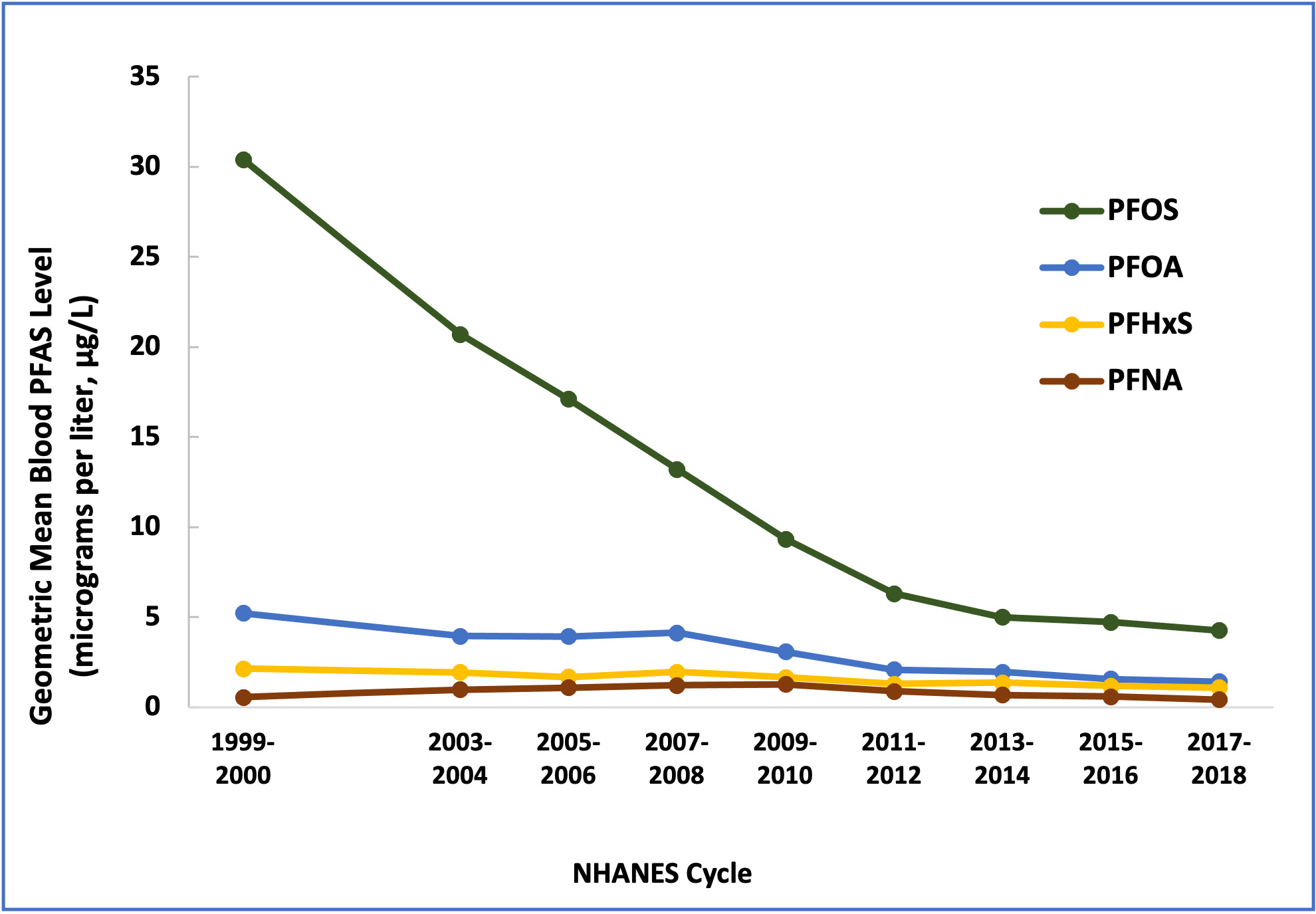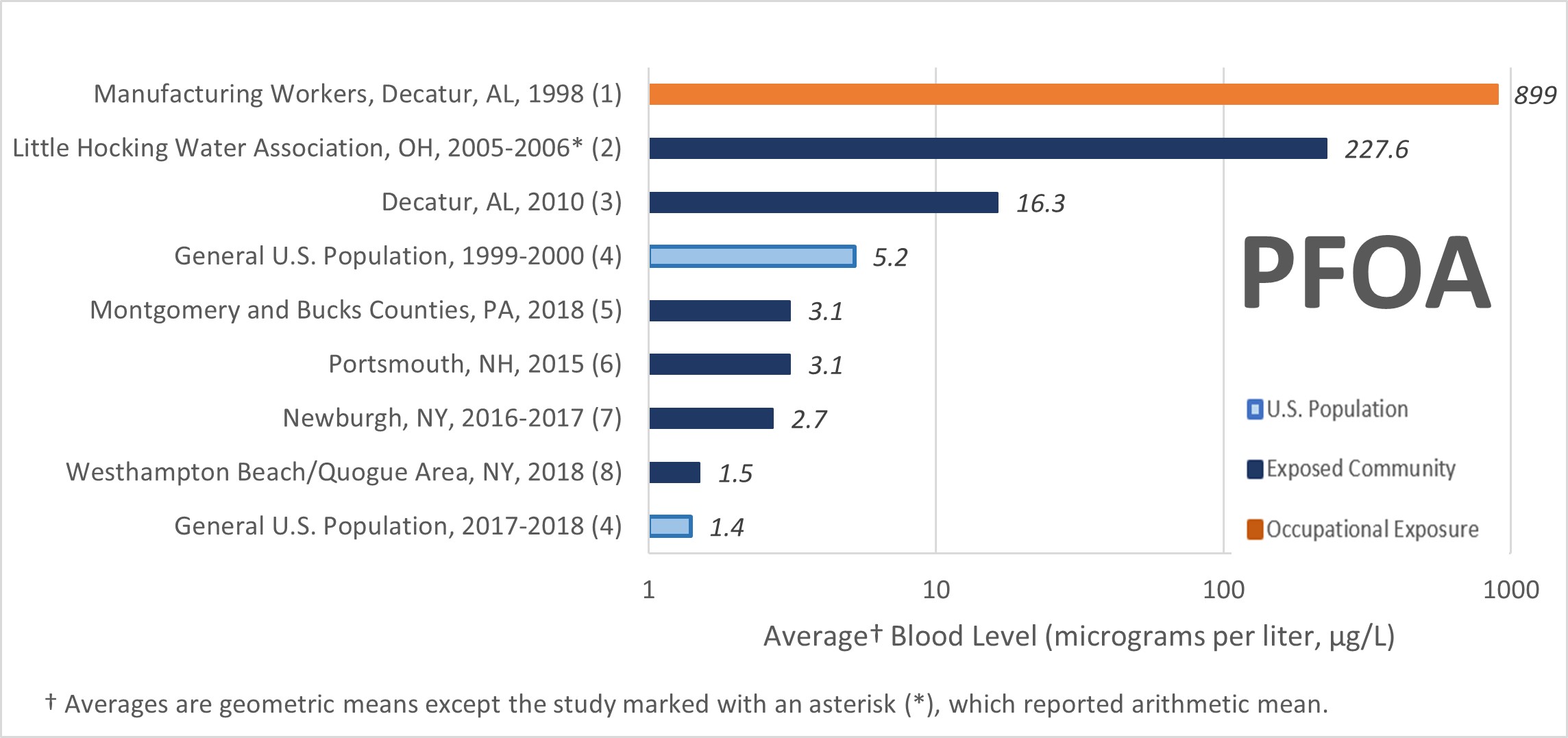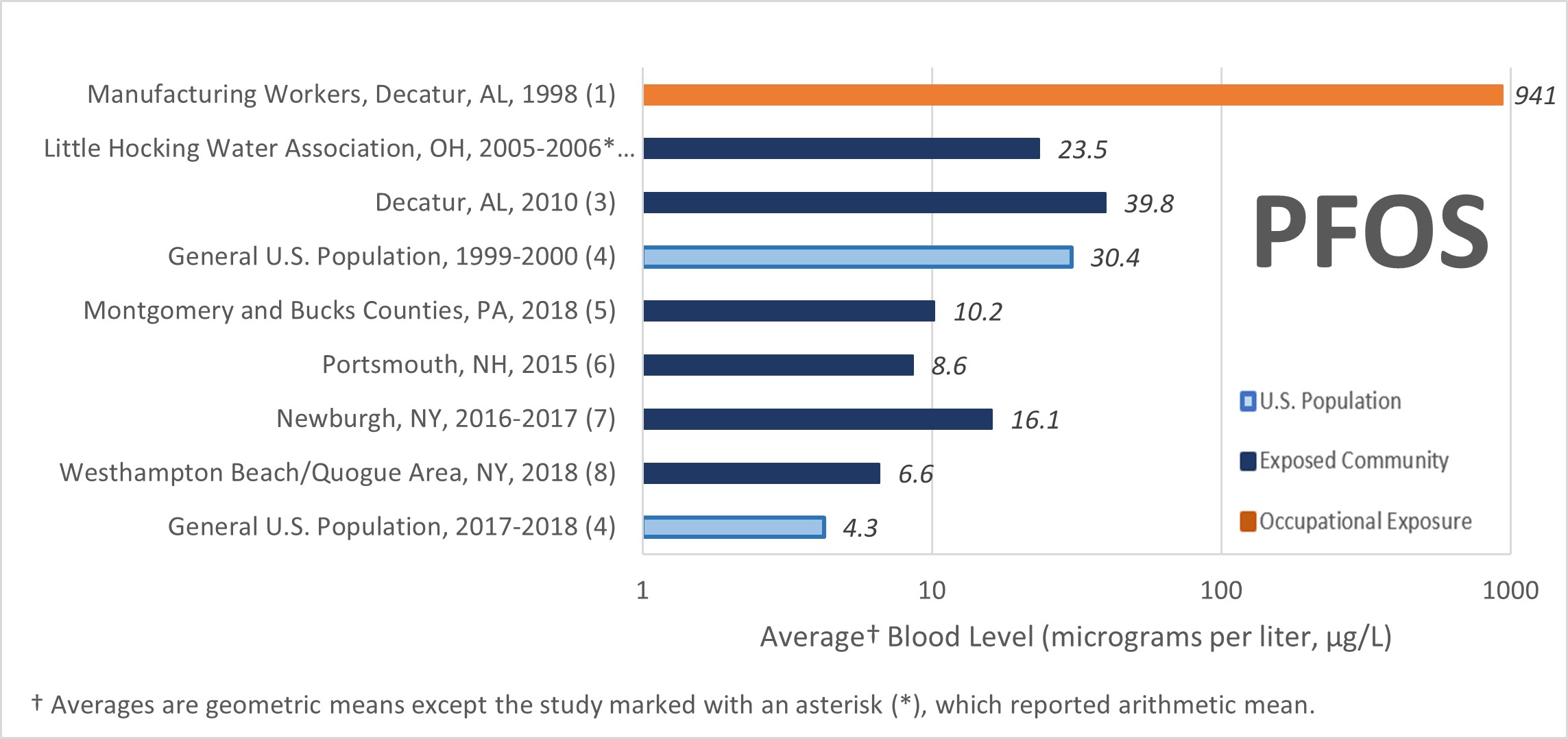What to know
Most people in the U.S. have been exposed to PFAS and have it in their blood. Since 1999, the National Health and Nutrition Examination Survey (NHANES) has measured blood PFAS in the U.S. population. Nearly all people in the U.S. have PFAS in their blood. Certain PFAS blood levels are declining with reduced production and use.
About PFAS monitoring
The NHANES program of studies was designed by the Centers for Disease Control and Prevention (CDC). It has measured the blood PFAS in the U.S. population since 1999-2000. The purpose of NHANES is to evaluate the health and nutrition of adults and children in the U.S. These data are publicly released in 2-year cycles.
Blood levels of the most common PFASA

Since 2002, production and use of PFOS and PFOA in the U.S. have declined. As a result, some blood PFAS levels have also gone down. From 1999-2000 to 2018-2019:
- Blood PFOS levels declined by more than 85%.
- Blood PFOA levels declined by more than 70%.
People may be exposed to other PFAS as PFOS and PFOA are phased out and replaced.
For more information
Populations
Biomonitoring studies have measured PFAS levels in specific groups within the U.S.:
- Workers in PFAS manufacturing facilities
- Communities with contaminated drinking water
- The general U.S. population
The figures below show PFOA, PFOS, and PFHxS blood levels measured in different exposed populations. These are compared to levels CDC measured in the general U.S. population in 1999-2000, 2015-2016, and 2017-2018.


- Centers for Disease Control and Prevention. National Report on Human Exposure to Environmental Chemicals, Biomonitoring Data Tables for Environmental Chemicals. Atlanta, GA: U.S. Department of Health and Human Services, Centers for Disease Control and Prevention.
- G.W. Olsen, et al., 2003. https://www.tandfonline.com/doi/pdf/10.1080/15428110308984859?needAccess=true
- Frisbee, et al., 2005/2006. https://ehp.niehs.nih.gov/doi/pdf/10.1289/ehp.0800379
- Agency for Toxic Substances and Disease Registry, 2010. https://www.atsdr.cdc.gov/HAC/pha/Decatur/Perfluorochemical_Serum%20Sampling.pdf
- Centers for Disease Control, NHANES, 1999-2018. https://www.cdc.gov/exposurereport/data_tables.html
- Pennsylvania Department of Health, 2019. https://www.health.pa.gov/topics/Documents/Environmental%20Health/PEATT%20Pilot%20Project%20Final%20Report%20April%2029%202019.pdf
- New Hampshire Department of Health and Human Services, 2015. https://www.dhhs.nh.gov/sites/g/files/ehbemt476/files/documents/2021-11/pease-pfc-blood-testing.pdf
- New York Department of Health, 2016/2017. https://www.health.ny.gov/environmental/investigations/newburgh/docs/infosheetgroupresults.pdf
- New York Department of Health, 2018. https://www.health.ny.gov/environmental/investigations/drinkingwaterresponse/docs/westhampton_quogue_group_level_blood_testing

